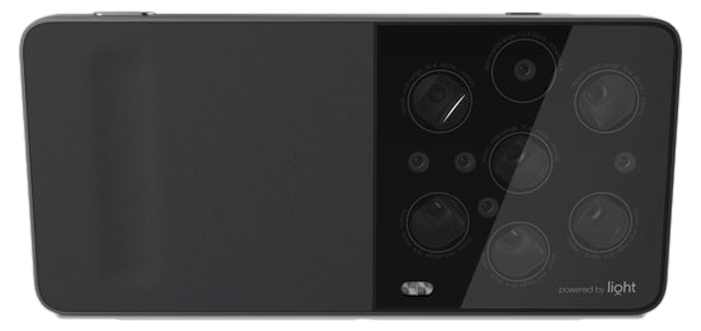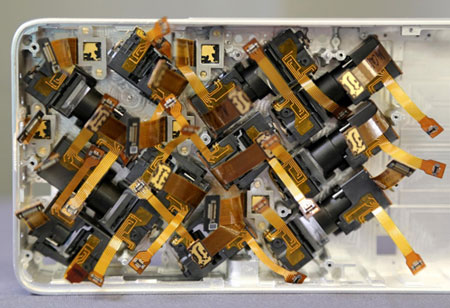It’s the missing link between “traditional” photography gear and the disruptive technology brought along by smartphones: no doubt that a DSLR or top mirrorless camera excels a portable device’s camera in every way possible. That’s not because of the former’s larger sensor or better processing speeds, it primarily comes down to optics. There is no workaround yet around a good old, well designed lens. Smartphones are able to deliver razor-sharp images and a variety of focal lengths, especially at the wide end. Yet simple laws of physics make it impossible to this day to use a smartphone as a high-quality zoom camera. The technology that will achieve to close that missing link, well, that technology might make the last prevailing advantages of a DSLR redundant. A photography startup called Light believes it has found a way fit the quality and zoom of a bulky, expensive DSLR camera into much smaller, cheaper packages — even phones.
Smartphone camreas are limited by a key aspect of their design: they have one lens and one image sensor. Light hits the lens and is directed at the sensor to produce a picture. Rather than hewing to this one-to-one ratio, Light aims to put a bunch of small lenses, each paired with its own image sensor, into smartphones and other gadgets. They’ll fire simultaneously when you take a photo, and software will automatically combine the images.

The idea is that when you take a picture with a Light camera it’s taking several pictures at the same time from slightly different perspectives (though it won’t show them to the user). The level of zoom that the user selects determines which modules will fire when he takes a picture, and where the mirror contained in each module moves to capture light. It could aim for light straight ahead, or off at an angle, for instance. The resulting shots are then digitally combined in a way that emulates a much bigger camera lens.
The software should also make it possible to adjust the focus on photos after they’ve been taken — a trick that also is possible with a camera from Lytro that does this by placing an array of lenses atop one image sensor.
The timing of Light’s coming-of-age is telling. With its recent acquisition of array-camera startup LinX Apple is aiming to achieve the exactly same thing: putting the power of a DSLR into a smartphone. Yet, Light’s approach is much more ambitious. Imagine having several small cameras on the back of your phone, each with different focal lengths or focus settings, and then having the GPU on the phone assemble the best possible image of whatever you were looking at in whatever way you wanted.

So, truly pocketable image quality and zoom capabilities might not be such big stumbling blocks in the near future, thanks to an array of different focal length “prime” lenses. A cluster of small camera modules to create top-notch photos.
Light is still in the early stages, as it doesn’t yet have a prototype of a full product completed. For now it just has camera modules whose pictures can be combined with its software. But the startup says it expects the first Light cameras, with 52MP resolution, to appear in smartphones in 2016. And Light won’t produce own smartphones or cameras.
The startup obviously needs a strong-arm partner to help it roll out its innovation to the masses. Light is about to announce a deal with such a partner: Foxconn, the world’s largest contract electronics manufacturer and the world’s largest manufacturer of Apple products. Foxconn is licensing Light’s technology for use in mobile devices and is investing an undisclosed amount in the company.


